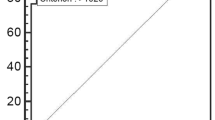Abstract
Hyperoxaluria was reported to induce renal damage, probably due to toxic effects on renal tubules. Such tubular damage might be expressed by an increase in urinary excretion of marker enzymes such as N-acetyl-β-d-glucosaminidase (NAG). We set out to examine a possible relationship between the excretion of NAG and that of urinary lithogenic and stone-inhibitory substances by analyzing 24-h urine specimens from 56 children with urolithiasis and 25 healthy children with normal renal function and without a history of urolithiasis. The NAG excretion was higher in patients with urolithiasis (3.5 ± 0.51 U/g creatinine) as compared with healthy subjects (1.33 ± 0.14 U/g creatinine, P < 0.05). A positive correlation between NAG and oxalate excretion was observed in female patients (r = 0.56; P < 0.01). In conclusion, the increase in urinary NAG in children with urolithiasis might express renal tubular damage. It seemed, however, not to be specifically related to the excretion of a single lithogenic substance.
Similar content being viewed by others
Author information
Authors and Affiliations
Rights and permissions
About this article
Cite this article
Balla, A., Salah, A., Abdalmotaal, E. et al. N-Acetyl-β-d-glucosaminidase excretion in healthy children and in pediatric patients with urolithiasis. World J Urol 16, 413–416 (1998). https://doi.org/10.1007/s003450050093
Issue Date:
DOI: https://doi.org/10.1007/s003450050093




